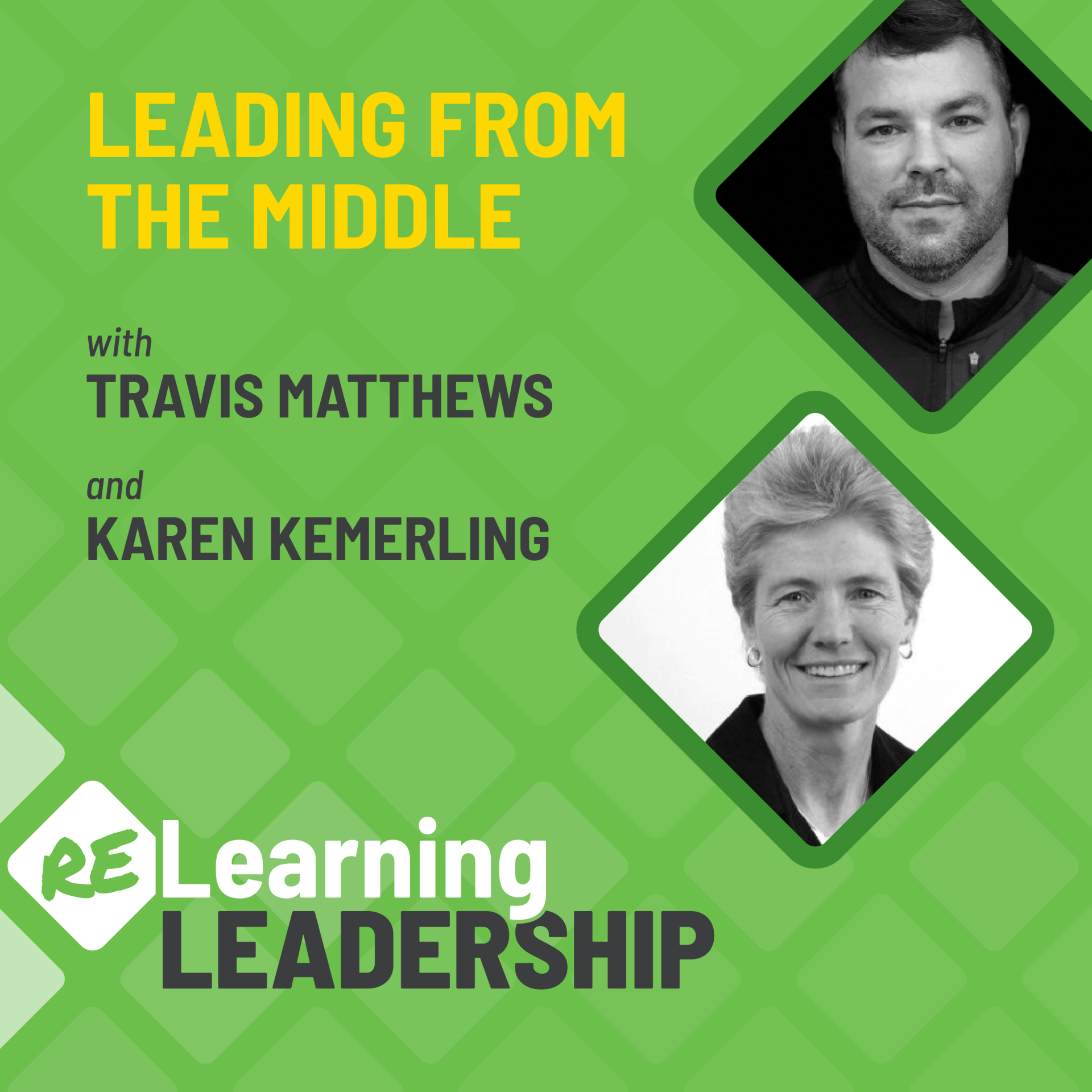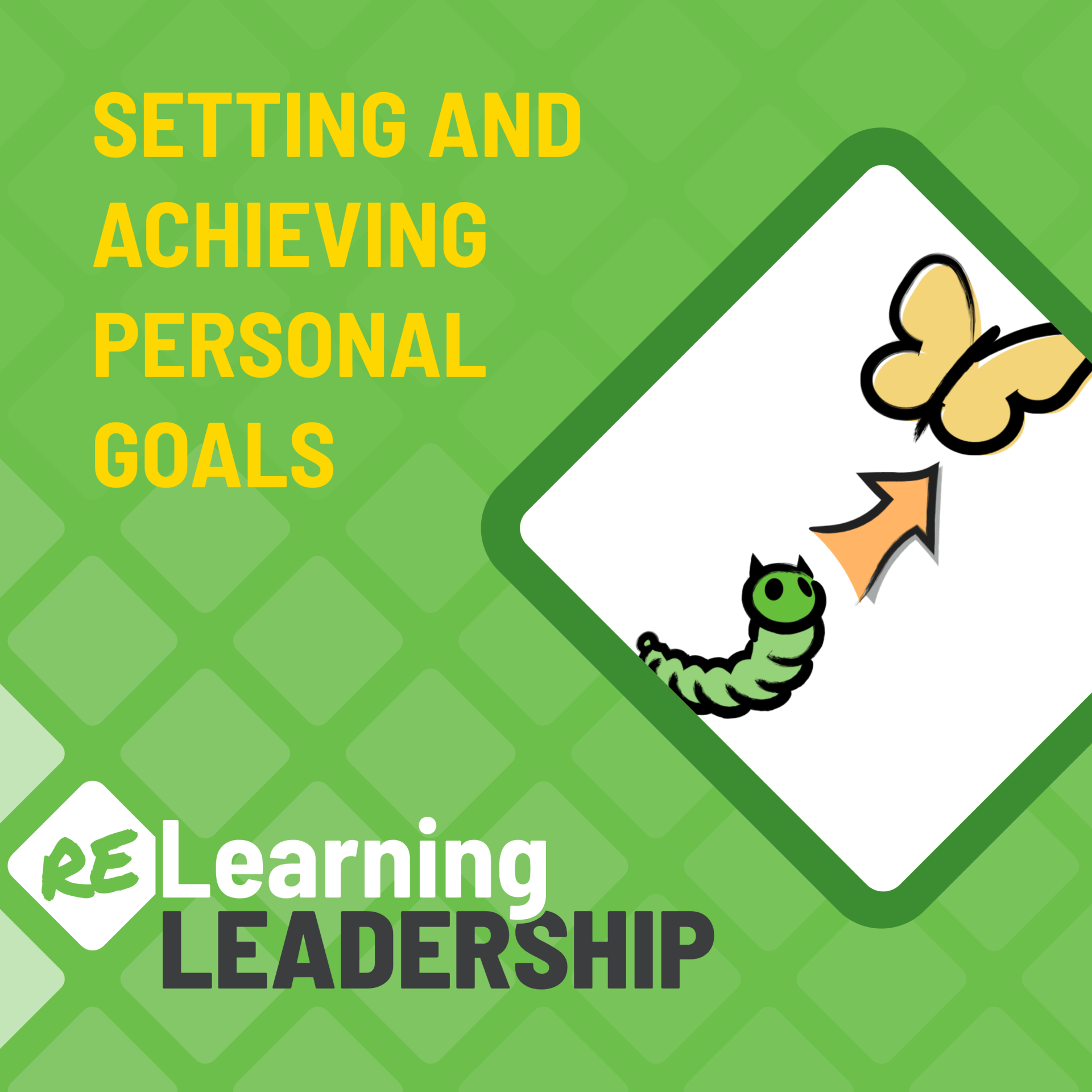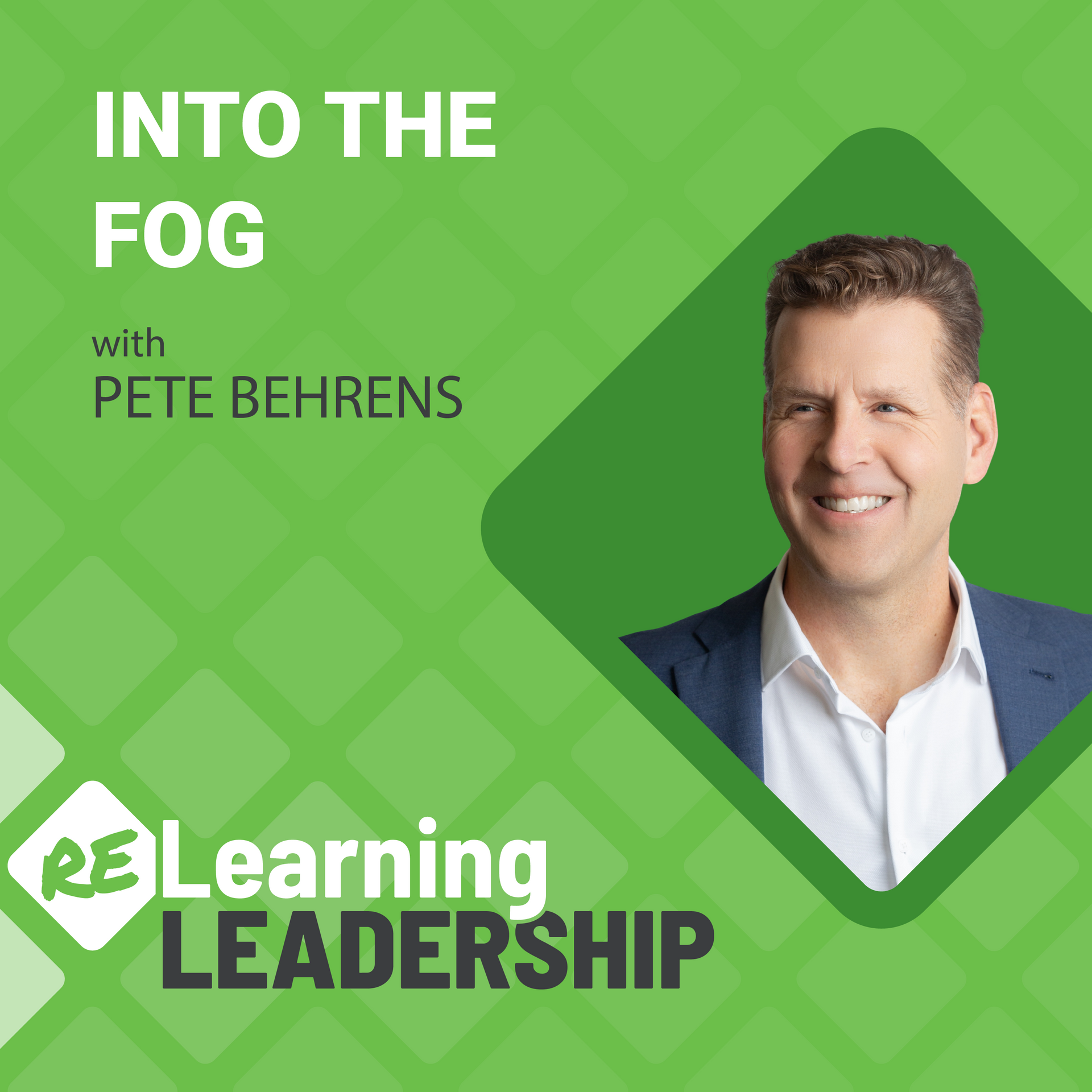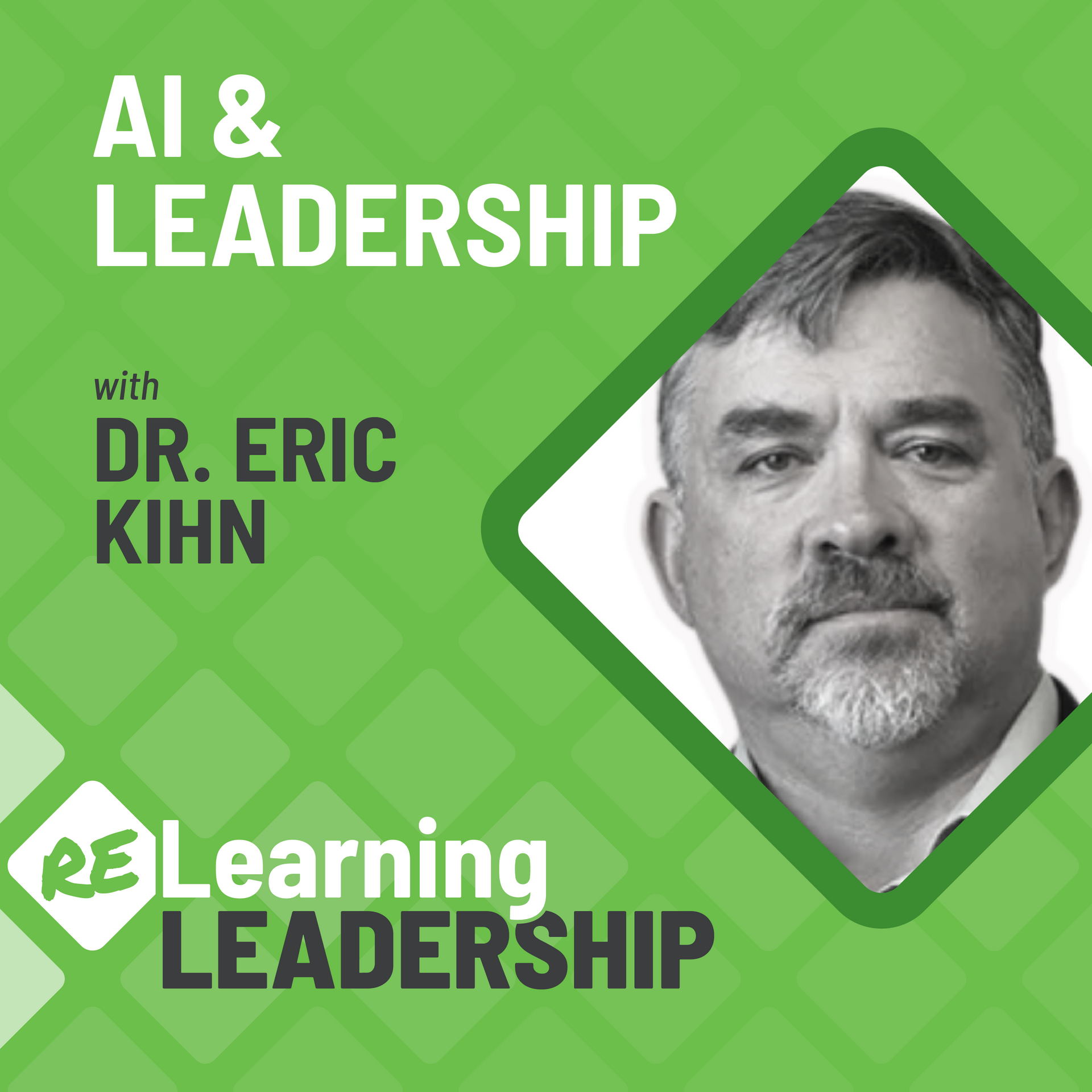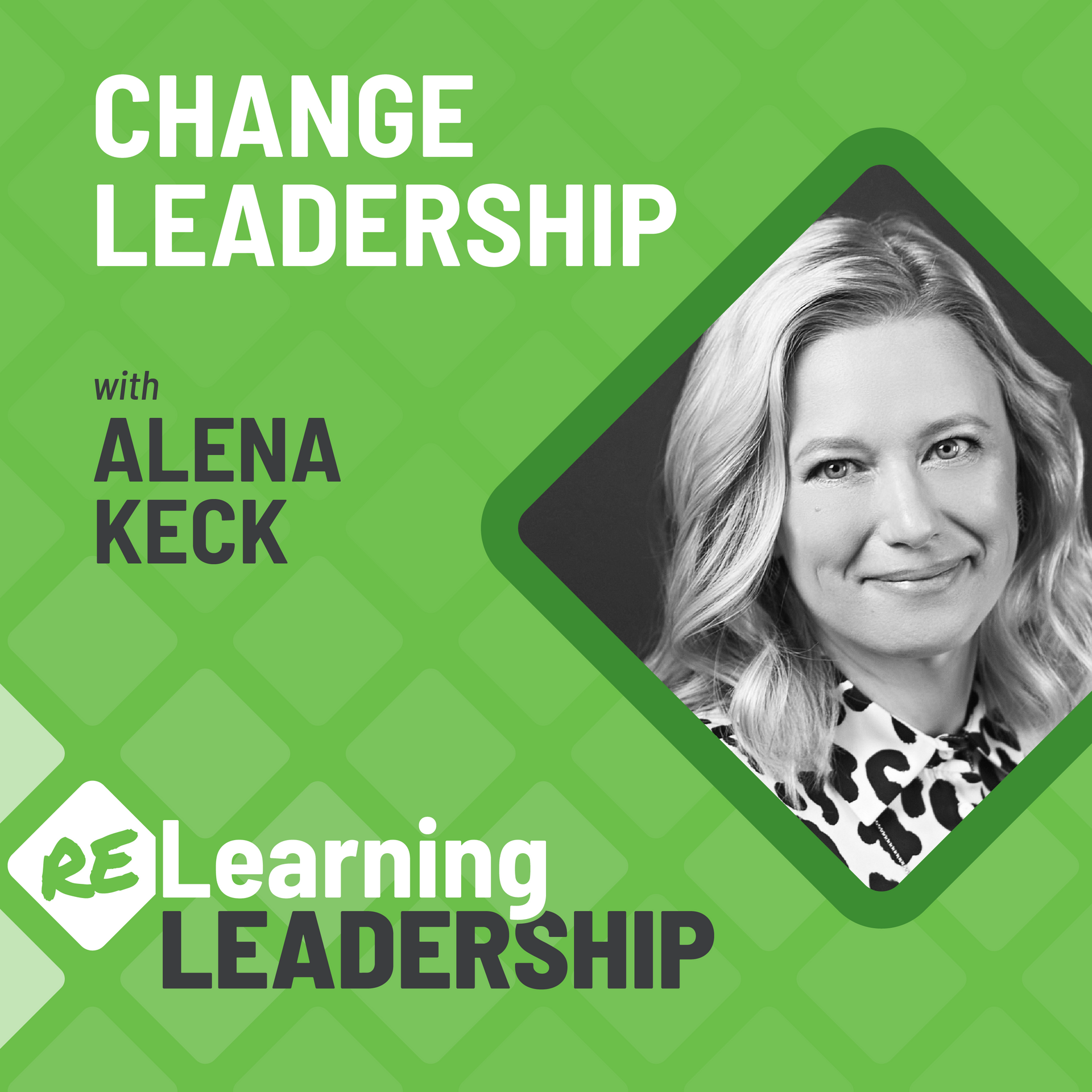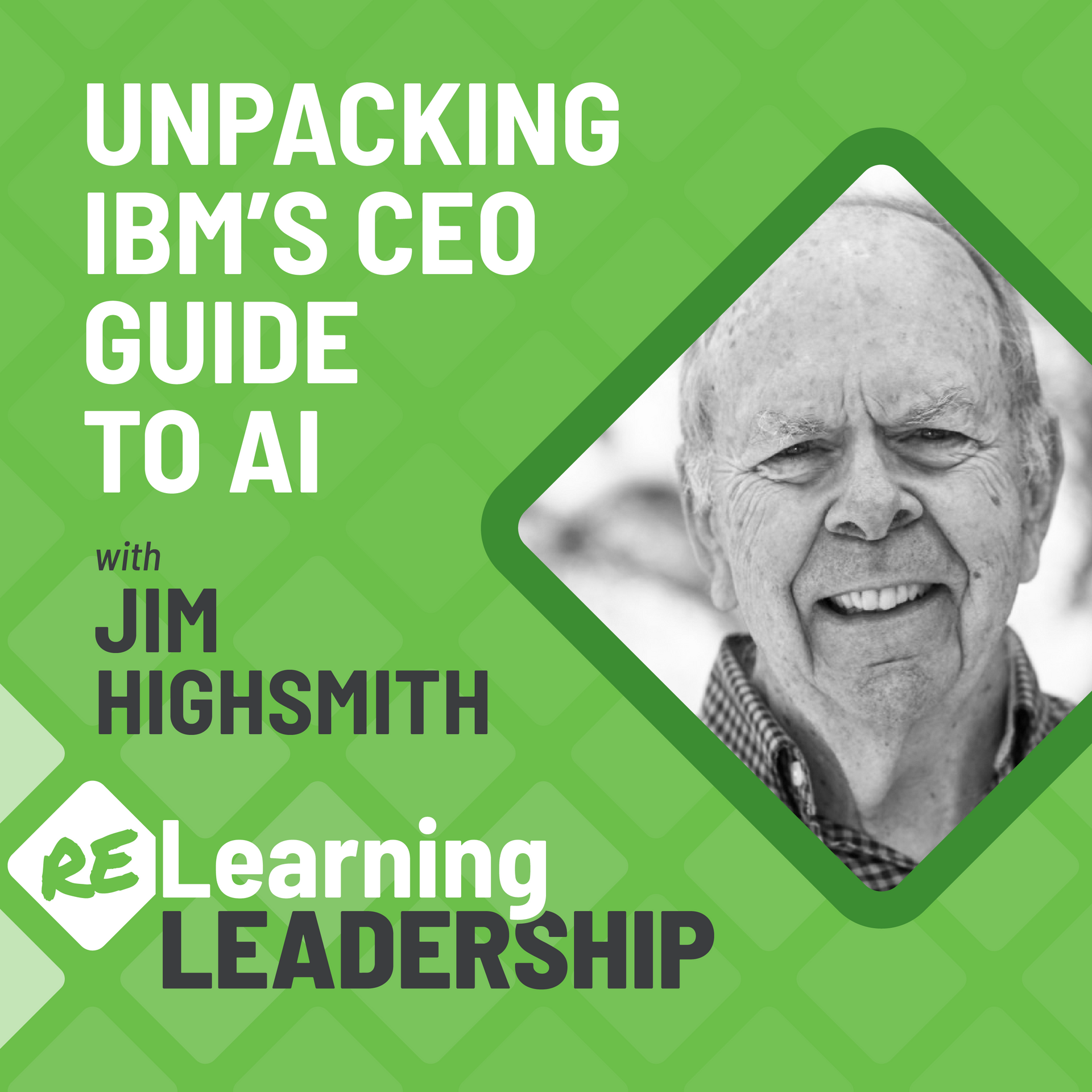52: Strategic Thinking with Christina Carlson
How can you learn to think more strategically?
In this episode of the Relearning Leadership podcast, Pete and ALJ Guide and leadership coach Christina Carlson discuss the difference between strategy and strategic thinking, and how leaders can execute the day-to-day while keeping an eye on the big picture.
Christina Carlson, Leadership Coach & ALJ Guide
Christina Carlson is a leadership coach and ALJ Guide who shares how to become Unstuck through collaboration, creativity, and agility.
Her ability to conceptualize strategy by actively connecting peoples’ complex ideas to their values in order to broaden their perspectives makes her a sought-after commodity for companies and independent entrepreneurs.
By applying research and scientific practice through a creative mindset, she helps leaders move to the next evolution of their leadership growth.
Connect with Christina

Relearning from this episode…
Complexity of Strategic Thinking
Strategic thinking requires us to consider various dimensions, such as current/future, big/little, and what/who. Embracing this complexity involves recognizing that strategic thinking cannot be a one-size-fits-all approach.
Strategy vs Strategic Thinking
A crucial distinction is made between strategy (the output or plan) and strategic thinking (the mindset or thinking process). Not everyone needs to create a strategy, but cultivating a strategic thinking mindset is beneficial for individuals at all levels.
Balancing Strategic Direction and Execution
Strategic direction and execution are not mutually exclusive; instead, they should complement each other. Having a clear strategic goal is essential for effective agility, as it provides the necessary direction for pivoting and decision-making. Leaders need to strike a balance between these two elements in fostering organizational success.
Explore:
Related Episodes
Recent Episodes
Episode Transcript
Pete Behrens:
What does it mean when somebody asks you to be more strategic? Welcome to another episode of (Re)Learning Leadership, where we explore a specific leadership challenge and break it down to help improve your leadership, your organization, and, just possibly, your personal life. I'm Pete Behrens, and today I'm joined by Christina Carlson, an Agile Leadership Journey Guide and a leadership coach with Unstuck. And today we're going to navigate the landscape of strategy and strategic thinking. And we find that working with leaders—this is one of those spaces that's a fairly big jump, when you're shifting from more of that—the do focus, the work focus, into that future orientation focus as a leader. So, I hope you enjoy this conversation with Christina!
Well, thanks Christina for joining me and talking about this topic with me today!
Christina Carlson:
No problem! It's my pleasure. Thank you for having me.
Pete Behrens:
Yeah! So, maybe, first of all, just share—why is this a topic of interest for you? Why is this something that you seem to be passionate about?
Christina Carlson:
Yeah. I think strategy, to me, is very—I'm passionate about it because I find it's a language or a terminology that's used in so many different ways in an organization, but also between organizations and in different Industries. And I think as—doing what we do and interacting so often with different people, I'm always gathering—it feels like—different approaches and different tools and different definitions and applications, and it gets really muddy really fast! [Laughs] And so, I find it really interesting when it's supposed to just be this, like, “Just be strategic!” Right?
Pete Behrens:
Yeah, yeah. That notion of, like, “Hey, can't you just be more strategic?” And I think that comment is a really good one for kind of setting the stage for this conversation, right? That this is a vast landscape, and we're not really here to say, “Hey, here's the answers!” Right? It's more of a, “Let's walk through that landscape. Let's understand the challenges. And, maybe, let's understand some strategies or maybe even, just, ways of thinking that might help improve our leadership.” Is that fair to say?
Christina Carlson:
Yeah. Absolutely, absolutely. And I think that I'd like to, like, maybe, just to unravel that with you a little bit. And kind of—what are we hearing in the field, and what are we hearing in our cohorts, and what are we seeing in the future as these things are starting to—the world's changing so quickly, right? And so, for me, personally when it's, “I need you to be more strategic”, it's me. Like, I'm not thinking big picture enough, right? I'm really stuck in the day-to-day tasks of my job. And, to me, strategy is where you start to get that—more of that—career mindset, right? And how do I bring value in what I'm doing to the whole organization or to my whole whole department? Kind of—whatever kind of scope you're working in. And sometimes it's not that big, right? So, it's very interesting to me when people say, “Can you just be more strategic?” I think everyone on your team will probably have a different definition as to what that means, how they want to apply it, what part of their job does—can they even do that in, right?
Pete Behrens:
Yeah.
Christina Carlson:
Yeah. What do you—what is your example? Like, what are you deciding when that happens?
Pete Behrens:
Yeah. I mean, I think what you're resonating in my thought process here is—we all come at strategy with a different expectation and, then, different limitations—right?—in terms of what that means. I work with a lot of leaders who are stuck in the middle between corporate strategy and team strategy. And so, like, I—do I define the strategy, or is that done for me? And then, if there is a strategy, like, what's my role with that? And I'm kind of like, “Do I add to it? Do I—can I veer away from it?” Like, what are—what is the law, or what are the rules that allow me to be strategic in that way? So, you're right. In a sense, the questions are really contextual in the space I'm in and my role that I'm in. And it's very, maybe, seemingly easy, when you think about the CEO, right? “Oh, yes, of course we need strategy!” But I think it gets more complex in the middle.
Christina Carlson:
Yeah, and I find that people in the middle, that I'm working with, are, like, “Well, now I'm doing this off the side of my desk.” And so, it automatically segregates itself from the day-to-day business or their day-to-day work. And so, they feel like they're, like, kind of trying to do two things at the same—juggling two things at the same time. And it's like, “I can't ever get to that! It's just off the side of my desk, right?” And so, to offset that, I've had companies say, “Well, here's the strategy playbook, right? Here is your PDF document with all of your tools and who you need to talk to and how to go about doing it.” And I always find that so fascinating. Because that's very different than just being more strategic, right? That's, like, strategy planning, which is a very different thing, in my opinion.
Pete Behrens:
Okay. So, maybe, let's start to differentiate this first one, which is strategy planning and strategic thinking, right? You're talking about—one thing is an activity. Another is really more of a mindset. Is that a fair way that, maybe, we can differentiate those two?
Christina Carlson:
Yeah, yeah. And so, how do you start to get curious and ask the person delegating that to you to understand, right? Are you just asking me to think a little bit differently about how me and my team do my work? Or do you need me to plan this nicely bowed up, you know, strategic plan that you handed to me and shows them how they—it ties to our OKRs or our metric or whatever we're doing, right? So, that's—they're very different, and I think they're not mutually exclusive. I think they probably go together, but they're not the same thing, in my opinion.
Pete Behrens:
Well, yeah. I mean, to me, that strategic thinking—first of all, I think what you say—it has to shift from the side of my desk into the center. Like, I've got to create space and time for that as a leader, if, first of all, I'm operating that orientation, my head's down in work. Strategic thinking, probably, is getting pushed to the side, right? So it's—the first place is, what do I have to let go of to enable time and space for it? Is that a good starting point?
Christina Carlson:
Yeah, I think, for sure, the space part of it, setting intention, right? Like, what are we being—where are we applying strategic thinking to? Like, it doesn't have to be for every single task and every single thing we do in our work. But I think there's some intentionality set here, to like, “Where does it—is it a best fit to start?”—I think is really important. And then also understanding the, like—just because we could do it, doesn’t mean we should be doing it, right? [Laughs] And, kind of, I think that's always a nice place to start with thinking more strategically, is—like, “Are we doing things the way they've always been?” Or, you know, “Yes! You know, my team can gather all these tasks and do all this stuff, but should we be doing it? Is it actually moving us in a direction we want to go?” And I think that's enough. When anyone new is—like, when I'm coaching anyone new in being strategic, I think that's a, to me, a nice starting point—is to just start to ask some questions around the why behind your work, essentially.
Pete Behrens:
The other thing I often see when somebody tries to shift, and they start to shift into a strategic orientation—they take an expert mindset to it. So it's, like, “I've got to be the one to create the strategy.” And so, it's a solo sport, right” It's—but that's kind of the opposite of the intent of strategy, is—it's a collective sport. It should be a team sport. And so, sometimes when these leaders shift from expert to achiever, they're, in a sense, bringing the expert mindset with them, just on a new topic. And this doesn't have to be something you do alone! This doesn't have to be something that you are solely the author of. I try to help leaders recognize you can facilitate this. Like, you can enter into a conversation about strategy, and all of the sudden, you don't have to be the one with all the answers! And people might actually appreciate that.
Christina Carlson:
Yeah, and even, if it's, like, too big to do it with your team. Like, a lot of people will try it with their team, and they're like, “My team didn't know what to do. They were so confused as to why, suddenly, I was asking their opinions about things and asking them what their thoughts were.”. And so, I find even, like, a peer-to-peer level—like, there's a lot of opportunity to work, you know, cross-departmentally. And, like, you kind of have your peer-level meetings and that type of thing. Just, even, leading the conversations there, I think, is an easier spot sometimes for people to get into it. Because there's always, like, this weird—if you don't talk about strategy, like, that's the other part of this, is—no one's talking about it in the sense of, like—that is a great example of strategic thinking right there, right? Like, we don't highlight the wins when people are doing it, I find, as much as the “This is a solution to a problem that's existing.” And so, we don't have examples to kind of lean into or orient into often, internally.
Pete Behrens:
Well, I'm thinking—you reminded me of a couple—just, the questions you can ask, right? So, the what and how questions are very tactical, right? They're very, kind of, achieving. The why and where and who questions are a little bit more in that strategic realm of just—even if you're in conversation, asking different kinds of questions shape a strategic orientation.
Christina Carlson:
Yes. And, you know what else it'll do is—it'll feed out those people who are masking strategic thinking as micromanagement. [Laughs] Because, I think, sometimes people—
Pete Behrens:
—It sounds like you're getting into the danger voodoo here. So, go on!
Christina Carlson:
Well, sometimes people, managers I've had, experiences with executives who have been like, “I need you to be more strategic on this and report back to me on how you're being strategic.” And when, really, they want to see my thought process. They want me to write down the, like—and it was just a different version of that expert mindset guised as strategy. And then they would kind of correct your work, essentially, as if you did it right or not. And I think that it can be dangerous to do that. And so, we need to be careful as leaders, how we're receiving it and how—what we're doing with it when people are strategic.
Pete Behrens:
Huh. That's interesting. So, you separated something like—okay, big versus little, like, broad versus narrow. Like, that's one way of thinking strategy. But I also think strategy is also wide, right? So it's—where are we going along a path? I mean, that's another dimension of strategic thinking in addition to big and little. Do you see that difference, I guess, in terms of—you think of a landscape, right? You've got at least two dimensions—or three dimensions here—we got to be thinking about. How do you help leaders through those variables?
Christina Carlson:
Well, I find that it's a really nice link to autonomy. So, leaders who are talking about, “I need more autonomous culture! We're trying to build more autonomy with our teams!” Allowing a strategy or someone to be more strategic in how they get there. So, as in, thinking about—we don't have to have one path. We can all get to the destination on multiple routes, essentially. And so, widening it out to—as in, like, there's more opportunity. There's more options. There's more ways of working to get there—I think, allows people to play in more of a strategic mindset in creating those different opportunities and also building that autonomy piece at the same time. Because it's not about, “Well, prove it all to me now! And then we're going to pick one way for the rest of the organization.” It's about holding true the destination, right? And making sure that that's consistent.
Pete Behrens:
You're bringing up something that I often write about and talk with leaders about. It's that—sometimes it feels like strategy counters agility. Like, these things can't live in the same space. What you're saying is—actually, strategy is a goal or a direction we're going. Agility is the ability to pivot in service of that. In fact, without having a clear goal, pivoting and making yes/no decisions are almost impossible. It's like getting in the car and driving and not having a goal. It's like, “Do I turn left or right?” Well, it really doesn't matter, right? So, you know, in a sense without having strategy, agility doesn't really even make sense, to some degree.
Christina Carlson:
Yeah. I would 100% agree. Without that vision or that target or the outcome, we're all trying to get to being defined. How do you be more strategic towards it, right? Or, you know, if we're—and I think that applies to anything, culture, team-building, you know, whatever it is. I think there has to be a shared goal, otherwise people get confused about where the decisions lie, about how they're contributing to, like, your point earlier. Like, am I building this, or am I just executing? You know, lots of people find value or feel valued when they get to be a part of building the strategy. But it's hard to allow for, all of the sudden, 200 decision-makers in the strategy as well. So, as a leader, or as you get higher up in the organization, how do you start to balance that—right?—and manage those expectations, even, in the organization.
Pete Behrens:
You're getting into a tricky space, which is—we need a shared goal, you mentioned. But I also need to get clarity and focus on that goal. So, there's this caveat of—I need some buy-in to this. I need some alignment to this goal, but I also want people to be engaged in creating that goal. And it feels like those are hard to do. Like, if everybody has a voice, then we never have clarity. And if we have clarity, then not everybody has a voice. Help me help leaders in how to navigate this trickiness here.
Christina Carlson:
Well, I—again, like, what is the outcome? Like, what—are we trying to feel, like, allow the staff to be more engaged and feel like we have a share of voice? Or are we trying to solve a very pertinent problem to the organization?
Pete Behrens:
Come on, Christina, you're saying it depends! Come on!
Christina Carlson:
It does! It really does! [Laughs] And I don't think that there—I don't subscribe to this “There's just one way!” Like, I really don't. And that's where the leader—that's why you're the leader, because you can guide the team to what needs to happen in the particular moment, if that makes sense. Like, you become, almost, that path-forger—right?—for the rest of the organization. And knowing you're going to get some branches in the face as you're through it. [Laughs] I mean, just to—don't fall off the cliff, right? So, that's kind of, I think, what you're asking is—how do I not fall off the cliff when I'm looking behind me, trying to guide my team and make sure everyone's still coming and working towards that shared goal.
Pete Behrens:
That's why we send scouts out, so they can go fall off the cliff! [Laughs]
Christina Carlson:
Or just come to the prairies! We don't have cliffs here; we just have dips! [Laughs]
Pete Behrens:
You know—at risk of adding more complexity to strategy—I was just talking with a leader the other day, and we were differentiating the—what we do versus who we are—strategic conversation, right? This whole notion of shifting from a focus of service and products and a delivery of a business versus, kind of, that strategic thought of, “I want to build a culture. I want to build an organization that feels like they have purpose.” Right? And yet, that's almost like the fourth dimension—I sometimes think about it as. Because, all of the sudden, it’s like, “Oh, no, I'm in a space that—now I'm feeling dizzy!” And that's the place I think a lot of leaders—that's a tough hurdle, right? To shift from a what to a who, in a sense. Who are we? What are we doing as an organization?
Christina Carlson:
And it sometimes makes you kind of—it forces you into a space that—where you're going against the internal systems and structures for reward, as well. So then, now, not only are you in that ambiguous space, but I'm not going to get rewarded for this; I'm not—it's not going to be tied to my bonus structure. It's not going to be tied to my next promotion, necessarily, unless I advocate for that. And I have—you kind of have to build those systems in that space at the same time as you're doing that work. And those two things are both full-time jobs, probably.
Pete Behrens:
Yeah. Alright, so, let's—we've been talking about a number of things. Maybe let's play a quick little—what jumped out to you during our conversation here? I'll pick one and then let you. And maybe we'll go, banter back and forth a little bit on a few of these. So, the one thing I heard is—it's a complex space, right? There's multiple dimensions. There's, kind of, current/future; there's big/little; there's what/who, right? There's this four-dimensional space that we're operating in. So, strategic thinking isn't one thing; it's many things, maybe—is the one thing I'm pulling out here. What's one of your takeaways so far?
Christina Carlson:
Yeah. It's, like, linking it to complicated, right? Where you all, by definition, need more than one person or more than one piece to make it happen, right? This isn't around—about distilling it down to something simple, or “Just be strategic!” This is about embracing the multifaceted pieces that require to do that and then reinforcing it in the everyday, almost—right?—with intention. Yeah.
Pete Behrens:
Yeah. So, another piece I pulled out was the difference between strategy and strategic thinking. So, kind of, the output versus a mindset. Or, you know, the—what we build versus the thinking process. That everybody can be strategic thinking; not everybody necessarily creates a strategy, I would say. Is that—
Christina Carlson:
Yeah, yeah. And I think that gets—and it makes it more clear, I think, by doing that, by differentiating that. I think the decision-making piece really stands out for me and setting some clear kind of frameworks or boundaries around what parts of the work need to be thought of more—with a more strategic mindset, Where there's more autonomy and freedom to kind of explore and experiment. Versus, you know—this is—we want input so that we can make a decision about strategy, right? Like, those are very different activities that happen in your work. And so, to have a category, an overall category about—“Are you strategic as a manager?”, I think, is doing a disservice by not, like, breaking that out a little bit more.
Pete Behrens:
Yeah. And, maybe, the final third point was kind of that—the balance between strategic direction and agility execution, right? It's not one or the other; it's a balance. It's a both/and, you know? They serve each other, to some degree. Versus thinking about them as fighting or competing in service. So, Christina, if there's one takeaway or one, maybe—not takeaway, one starting point! Like, if a leader was at, like, “What should I do!” Besides, “It depends!”, is there something you might recommend as the first place they might find some growth in their strategic journey?
Christina Carlson:
Yeah. So, identifying an obstacle that you can have some influence over for either part of the existing strategy, or strategy in another area that you're linked to. And, as part of the process, we use that Catalyst Canvas model, right? So I find—if you take an obstacle from somebody else's Canvas and use it as your goal, that is a great way to not only align, but it's a simple kind of—you can put your hands around it, start to finish. You can see how it's ripple-effect and influenced other pieces of the organization, too. So, I always find that's a nice, kind of, bite-sized space to start with.
Pete Behrens:
Yeah. I love that! So if you're not familiar, we'll put a link to the Catalyst Canvas. Great collective brainstorming tool for focusing, aligning, and executing or accelerating some change in the organization. They could be used for good strategic, organizational, or product service-type goals. Well, Christina, I just want to say thanks for just walking with me on this journey and exploring the landscape.
Christina Carlson:
Yeah, thanks for having me! It was a pleasure, as always.
Pete Behrens:
(Re)Learning Leadership is the official podcast of the Agile Leadership Journey. Together, we build better leaders. It’s hosted by me, Pete Behrens, with contributions from our global Guide community. It’s produced by Ryan Dugan. With music by Joy Zimmerman. If you enjoyed this episode, please subscribe, leave us a review, or share a comment. And visit our website, agileleadershipjourney.com/podcast, for guest profiles, episode references, transcripts, and to explore more about your own leadership journey.

